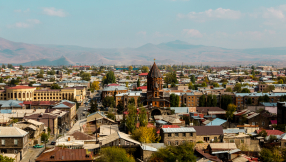
Scientists who study data gathered by Philae lander from Comet 67P/Churyumov-Gerasimenko discovered that organic compounds are present on the surface of the comet.
The lander particularly identified molecules from the early days of the Solar System, which suggests that the compounds could have been the components that made up life on Earth.
The data were taken from two instruments — the Cometary Sampling and Composition (COSAC) led by Germany and the Ptolemy team from United Kingdom.
The results of the findings were published in two separate papers in Science, as reported in The Conversation article by Monica Grady, who is married to Ian Wright, a member of the Ptolemy team.
"While this is a long, long way from finding life itself, the data shows that the organic compounds that eventually translated into organisms here on Earth existed in the early solar system," Grady stated in her report.
Philae was initially programmed to perform various experiments once it reached its destination, the comet landing site Agilkia, after it separated from the mothership Rosetta on November 12, 2014.
One mission for Philae is to "sniff" air to allow COSAC and Ptolemy to determine the chemicals that make up the comet trails.
However, Philae didn't make the expected touchdown since its harpoons failed to launch. As a result, the robot lander bounced off the surface of 67P twice.
Philae may not have succeeded as planned, but it was able to extract samples needed by COSAC and Ptolemy.
COSAC was able to gather "ice-poor dust grains," which had carbon- and nitrogen-rich compounds. On the other hand, Ptolemy gathered samples of gases that make up the "atmosphere" of the comet, which included carbon dioxide and carbon monoxide.
Earthsky.org reported that as of July 9, nothing came from Philae other than an intermittent contact on June 13.
Meanwhile, Rosetta has moved closer to observe Comet 67P as it is about to achieve perihelion, a term given to the event when a comet closes in on the sun.
Rosetta and Comet 67P will be 186 million kilometers from the sun by Aug. 13<sup>th.













